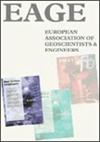ERT 数据同化,通过热追踪实验确定含水层水力传导异质性的特征
IF 1.6
4区 地球科学
Q3 GEOCHEMISTRY & GEOPHYSICS
引用次数: 0
摘要
地热能源系统(如依靠含水层的热泵)使用的是城市地区可以利用的可再生能源。在安装此类系统之前,有必要确定地下水的水力特性。在这种情况下,热跟踪实验是一种典型的现场测试,可帮助确定地下水的特性。在热跟踪实验过程中,可使用井下温度传感器、水位压力传感器和电阻率层析成像(ERT)进行监测,以帮助确定水文地质特性的特征。以往的监测工具存在低分辨率数据和过度平滑等缺陷,因此无法再现水文地质特性的异质性。集合卡尔曼滤波器(EnKF)是一种很有前途的工具,它可以克服过度平滑问题,从而再现水文地质属性的异质性。在这项工作中,我们提出了一种新的程序,将延时跨钻孔 ERT 数据同化到地下水流和热传导的数值模型中。地下水流动和传热有限元模型(FEFLOW 7.3)与岩石物理关系和电正演模型(Resipy)相结合,估算跨钻孔 ERT 测量值。然后,利用 EnKF 同化估算的视电阻率,更新水力传导模型。在位于加拿大魁北克市的一个实验点应用该方法的结果表明,由于更新后的 K 模型与岩性记录相当一致,K 的异质性得到了正确再现。此外,所提出的方法还能够复制跨钻孔 ERT 场和温度测量结果。K 的先验分布和后验分布与岩浆测试结果的比较表明,EnKF 使 K 的最终(同化)分布趋向于岩浆测试推断的 K 值。本文章由计算机程序翻译,如有差异,请以英文原文为准。
ERT Data Assimilation to Characterize Aquifer Hydraulic Conductivity Heterogeneity through a Heat-tracing Experiment
Geothermal Energy Systems such as heat pump relying on aquifers uses renewable sources of energy that are accessible in urban areas. It is necessary to characterize the subsurface hydraulic properties prior to the installation of such systems. In this context, heat tracing experiment is a typical field test that can help with characterization of the subsurface. During a heat tracing experiment, monitoring with downhole temperature sensors, water-level pressure transducers and electrical resistivity tomography (ERT) can be used to help to characterize the hydrogeological properties. Previous monitoring tools have shortcomings such as low-resolution data and over-smoothing, thus they fail to reproduce the heterogeneity of hydrogeological properties. Ensemble Kalman filter (EnKF) is a promising tool that can overcome the over-smoothing problem to replicate the hydrogeological property heterogeneity. In this work, we proposed a new procedure to assimilate time-lapse cross-borehole ERT data into a numerical model of groundwater flow and heat transfer, where the ground water is extracted, and heated water is reinjected into an unconfined sandy-gravel aquifer. The finite element model (FEFLOW 7.3) of groundwater flow and heat transfer is integrated with petrophysical relationship and electrical forward modeling (Resipy) to estimate cross-borehole ERT measurements. Then, the estimated apparent resistivity is assimilated to update the hydraulic conductivity model using EnKF. The results of the application of the proposed approach to a experimental site located in Quebec City (Canada) demonstrate that the heterogeneity of K is correctly reproduce since the updated K model is reasonably consistent with the lithological log. In addition, the proposed approach was able to replicate the cross-borehole ERT field and temperature measurements. The comparison between prior and posterior distribution of K with slug test results shows that the EnKF made the final (assimilated) distribution of K move toward K values inferred with slug tests.
求助全文
通过发布文献求助,成功后即可免费获取论文全文。
去求助
来源期刊

Near Surface Geophysics
地学-地球化学与地球物理
CiteScore
3.60
自引率
12.50%
发文量
42
审稿时长
6-12 weeks
期刊介绍:
Near Surface Geophysics is an international journal for the publication of research and development in geophysics applied to near surface. It places emphasis on geological, hydrogeological, geotechnical, environmental, engineering, mining, archaeological, agricultural and other applications of geophysics as well as physical soil and rock properties. Geophysical and geoscientific case histories with innovative use of geophysical techniques are welcome, which may include improvements on instrumentation, measurements, data acquisition and processing, modelling, inversion, interpretation, project management and multidisciplinary use. The papers should also be understandable to those who use geophysical data but are not necessarily geophysicists.
 求助内容:
求助内容: 应助结果提醒方式:
应助结果提醒方式:


